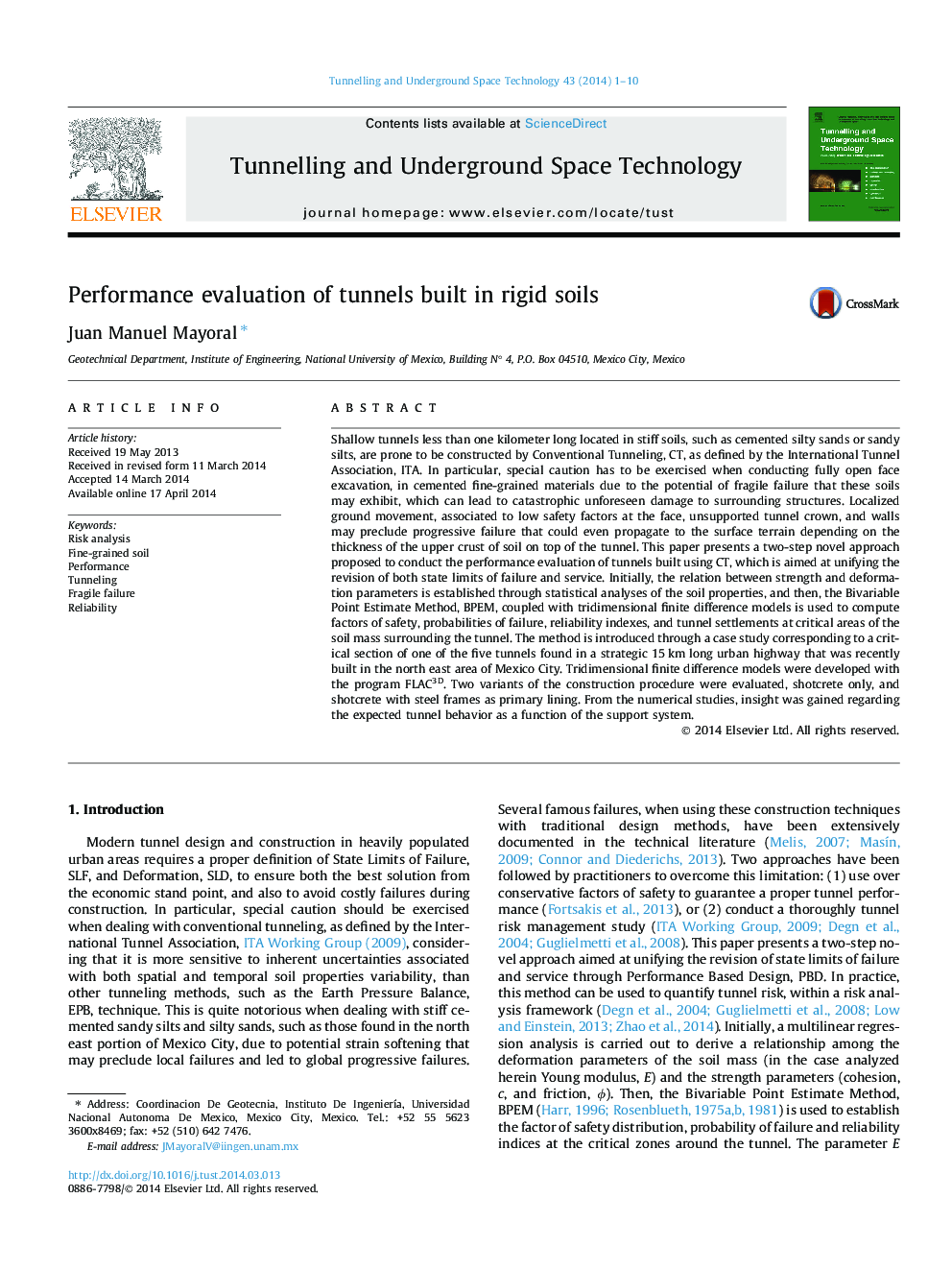| کد مقاله | کد نشریه | سال انتشار | مقاله انگلیسی | نسخه تمام متن |
|---|---|---|---|---|
| 311827 | 534146 | 2014 | 10 صفحه PDF | دانلود رایگان |
• A novel approach to unify revision of state limits of failure and service is proposed.
• A multilinear regression relationship is derived to obtain E50 as a function of c and ϕ.
• Reliability analyses are performed using the BPEM, coupled with 3D difference models.
• Overall frames failed to improve substantially tunnel performance during construction.
• Frames efficiency decreases when the soil properties become poor.
Shallow tunnels less than one kilometer long located in stiff soils, such as cemented silty sands or sandy silts, are prone to be constructed by Conventional Tunneling, CT, as defined by the International Tunnel Association, ITA. In particular, special caution has to be exercised when conducting fully open face excavation, in cemented fine-grained materials due to the potential of fragile failure that these soils may exhibit, which can lead to catastrophic unforeseen damage to surrounding structures. Localized ground movement, associated to low safety factors at the face, unsupported tunnel crown, and walls may preclude progressive failure that could even propagate to the surface terrain depending on the thickness of the upper crust of soil on top of the tunnel. This paper presents a two-step novel approach proposed to conduct the performance evaluation of tunnels built using CT, which is aimed at unifying the revision of both state limits of failure and service. Initially, the relation between strength and deformation parameters is established through statistical analyses of the soil properties, and then, the Bivariable Point Estimate Method, BPEM, coupled with tridimensional finite difference models is used to compute factors of safety, probabilities of failure, reliability indexes, and tunnel settlements at critical areas of the soil mass surrounding the tunnel. The method is introduced through a case study corresponding to a critical section of one of the five tunnels found in a strategic 15 km long urban highway that was recently built in the north east area of Mexico City. Tridimensional finite difference models were developed with the program FLAC3D. Two variants of the construction procedure were evaluated, shotcrete only, and shotcrete with steel frames as primary lining. From the numerical studies, insight was gained regarding the expected tunnel behavior as a function of the support system.
Journal: Tunnelling and Underground Space Technology - Volume 43, July 2014, Pages 1–10
